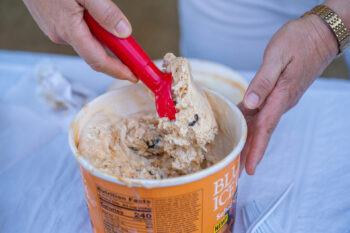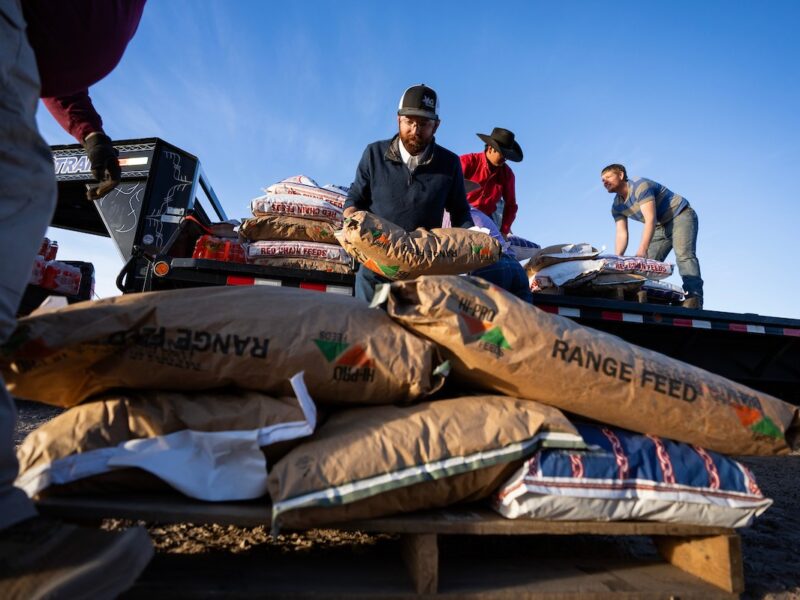Milk Prices Slump Despite Summer Demand Bump

Summer demand for ice cream and other dairy-based cold treats has historically contributed to higher milk prices for producers, but that has not been the case so far in 2023, according to Texas A&M AgriLife Extension Service experts.
Rising temperatures typically deliver the one-two price punch of higher demand and reduced production going into the dog days of summer, but dairies are currently producing a glut of milk. As a result, retail prices for an array of dairy-based products, including cheese and ice cream, remain high while producers are seeing low prices for raw milk.
AgriLife Extension dairy specialist Dr. Jennifer Spencer said milk prices were historically high for producers in 2022. Prices per hundredweight ranged between $23-$25 for most of the year and peaked at $25.87 in June and July last year.
However, prices per hundredweight have steadily declined this year and were $17.32 per hundredweight in the most recent U.S. Department of Agriculture report, she said. Hundredweight prices for producers were around $15 in 2020 and $17 by June 2021 as the pandemic interrupted typical demand, including cheese and butter for restaurants and carton milk for schools. They were around $19 per hundredweight before the pandemic.
Spencer said lower milk prices put pressure on a dairy operation’s ability to turn profits as other production costs, such as feed, fuel and labor continue to rise.
“Breakeven is different for every operation, but these prices may not be good for some producers,” she said. “They may have been optimistic in 2022 and expanded, but when prices drop $5-$6 per hundredweight, it makes it hard.”
Texas continues to add milk cows and production capacity as the number of dairy operations decline, Spencer said. There were 325 dairies in operation during 2021 and 319 dairies in 2022, while those operations added 20,000 cows to the statewide dairy herd.
Ice Cream Demand Declining, Production Rising
AgriLife Extension economist Dr. David Anderson said the lack of a summer price bump could be attributed to a few factors. U.S. dairy production is up, but it appears that overall milk demand is struggling a bit.
“The milk market is complex, and that makes it interesting,” he said. “There is a seasonality to the supply side and the demand side that keeps the market constantly moving.”
Spring conditions typically provide a flush of new grass and hay, silage and other forages, and ideal weather that pushes milk output by cows higher. Milk output slows as temperatures rise in the summer, while demand for ice cream increases.
In August, the built-in demand for carton milk at schools across the country pushes demand during the heat of summer. The holiday season delivers another level of demand as consumers increase their use of cheese, milk and other dairy products for baking.
In May, creameries produced 2.6% more hard ice cream than at that time last year. Retail prices for ice cream remained relatively high despite the low milk prices, he said. The Consumer Price Index showed May ice cream prices were $5.80 per half-gallon versus $5.35 per half-gallon at the same time last year.
Retail prices were showing signs of trending downward, he said. Cheddar cheese was $5.84 per pound, it’s lowest price since this time last year when a pound of cheese was $5.65.
Demand for the range of dairy-based products from protein powder, cheese and ice cream continues to push overall milk demand upward despite falling demand for specific products like liquid milk. It takes roughly 10 pounds of milk to make 1 pound of cheese. The cheese-making process produces whey, which is used in protein products.
Surprisingly, Anderson said ice cream consumption has steadily dipped over the last few decades. The U.S. consumed 18.2 pounds, a little over 4 gallons, of ice cream per capita in 1975 compared to 16.2 pounds in 2002, 13.2 pounds in 2012 and 12 pounds in 2021.
Cheese continues to show consistent demand growth, and processing plants to produce a range of hard and soft cheese products continue to expand to keep pace. Two new cheese-making facilities in Abilene and Lubbock are expected to be online this fall and in 2024, respectively.
Spencer said that processing capacity will help producers in the Panhandle, the region where 80% of the state’s dairy production is located. Some dairies in the No. 2 milk producing state – Wisconsin – were dumping milk because of low prices and processing capacity, Anderson said.
Dairy producers are thinning their milk herds in response to low prices and market factors to reduce costs and output, he said.
“Milk producers are responding to low prices and higher production and the market will have to adjust to what they are doing,” he said. “It’s summertime and I like ice cream, so I’m doing my part.”
This article by Adam Russell originally appeared on AgriLife Today.





